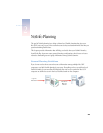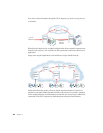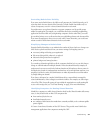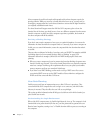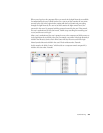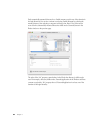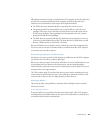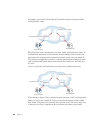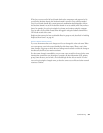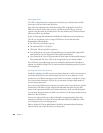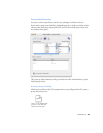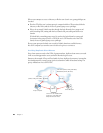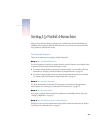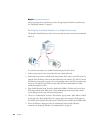NetInfo Planning 37
If Tony has a user record in his local domain that has the same names and password as his
record in the Students domain, the Students domain’s record for Tony would be masked.
Tony’s local domain should offer a name/password combination that distinguishes it from
the Students domain’s record. If the Students domain is not accessible (when Tony works at
home, for example), he can log in using the local name and continue using his computer.
Tony can still access local files created when he logged in using the Students domain if the
UID in both records is the same.
Duplicate short names also have undesirable effects in group records, described in “Avoiding
Duplicate Short Names” on page 40.
Choose Stable Short Names
Try to use short names that won’t change even if a user changes his or her real name. When
you create groups, users in them are identified by their short names. When a user’s short
name changes, any groups to which the user belongs must be edited to reflect the change so
that directory and file access remain consistent.
If a short name change is unavoidable, you can create a new record for the user (in the same
domain) that contains the new short name, but retains all other information (UID, primary
group, home directory, and so forth). Then disable login for the old user record. Now the
user can log in using the changed name, yet have the same access to files and other network
resources as before.



